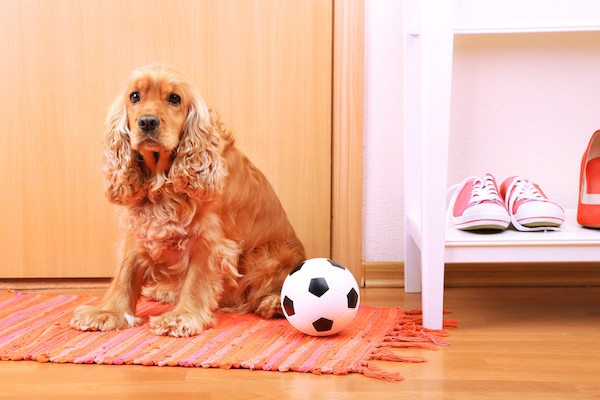This article originally appeared on dogster.com.
1. Be consistent when training your dog not to jump
Teach your dog to keep four on the floor at all times with every person he greets, including you. Sometimes pet parents reinforce jumping behavior by allowing their dogs to jump on them, but telling them “off” when they jump on other people. There needs to be one rule for all.
2. Find alternatives to your dog’s jumping
Harness the power of giving your dog something else to do, especially during times when he is most likely to jump, such as when people come to the door. The energy and adrenaline that drives jumping behavior has to find another outlet.
Teach your dog a different activity for when people first arrive. For example, he could go to fetch a toy or run to a mat or bed and stay there until cued to come off. This requires a certain amount of impulse control and can be difficult for excitable dogs. But if you make learning fun and reinforce success with motivating rewards, you will get the behavior you desire.

Prevent dog jumping by training your dog to go to a certain spot when guests arrive. Photography by Shutterstock.
3. Redirect your dog to avoid jumping
Teaching your dog cues to find alternate behaviors is key. A sitting dog cannot jump, so utilize family members, friends, and neighbors to help you practice his sitting on greeting.
Here are a few tips:  Line up your volunteers, and approach each one with your dog on leash. If your dog jumps, simply turn in the other direction, walk away a few steps, turn around, and approach again. If he walks up to a person and sits, give attention and a secondary reward such as food or a toy for complying.
Start by teaching these basics in a quiet environment and with calm volunteers. Later, you can take it to where the jumping behavior usually happens, which in most cases is by the front door.
Once your dog is sitting consistently as a person walks through the door, introduce auditory triggers that get your dog excited, such as a knock or bell ring. Wait for your dog to calm down before opening the door and letting someone in to greet. If he jumps up, your “guest” will turn around and leave, and the secondary reward goes away. If he sits, he gets attention and a reward.
4. Give your dog some space
If your dog is wary of strangers, keep everyone safe and comfortable by keeping him behind a baby gate, or in another room or “safe zone,” until your guests are settled. If he is wary but social, allow him to greet calmly; if he prefers his own space, give him an activity toy and leave him in his safe zone.
5. Ignore the bad behaviors, reward the good
Sometimes dogs forget what they have been taught and jump on their owners or guests. If this happens, ignore your dog and turn your back, or keep turning around until he gets off. Wait for four seconds of paws on the floor before giving attention. If your dog jumps again when he has attention, repeat your behavior until he realizes that jumping gets nothing, but four on the floor gets him all the attention he desires.

Teach your dog a different activity when people first arrive at your house, such as running to a mat or bed. .Photography by Shutterstock.
6. Don’t be cruel
Don’t knee your dog in the chest, yank his collar, shout, shock or physically reprimand him for jumping. Even though these actions might “fix” things for that moment, they don’t actually teach a dog anything. Also, you will usually find your dog continues to jump when a similar situation arises. Teaching him what to do instead will encourage him to make better choices the next time he feels the need to jump up.
Thumbnail: Photography by mikeledray/Shutterstock.












